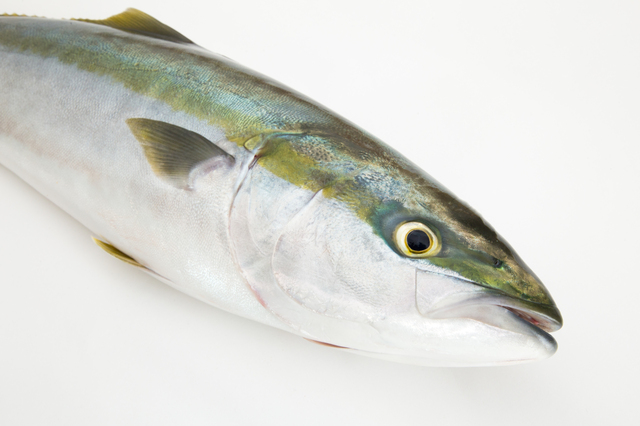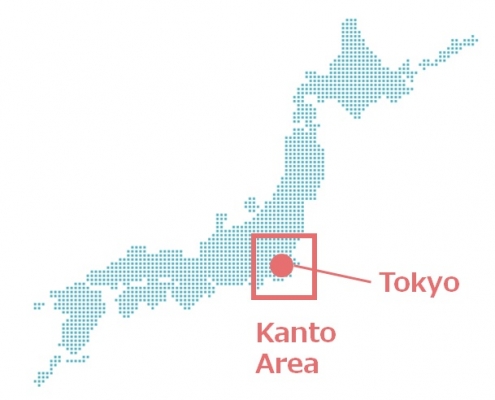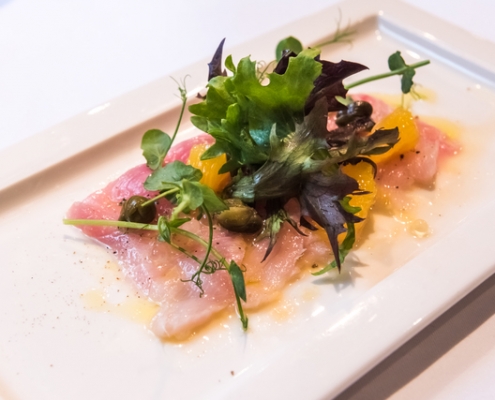Hamachi—The Third Popular Fish after Salmon and Tuna
May 20 2023 Updated
Contents
- 1 Hamachi, the Third Fish for Sushi
- 2 What Is the Difference between Hamachi and Buri?
- 3 Why Is the Fish Often Called “Hamachi” Overseas?
- 4 How Do We Eat It?
- 5 Can I Get Hamachi Abroad?
- 6 Do We Have a Substitute for Hamachi?
- 7 What is Fruit Fish, the New Trend of Hamachi?
- 8 Is There a School Where I Can Learn about Hamachi?
Hamachi, the Third Fish for Sushi
When you ask people in Japan what is their favorite sushi topping, usually salmon is ranked first, followed by tuna and then hamachi (buri). Hamachi (buri) is widely known in North America as an ingredient for Japanese cuisine, but not so much in other Asian countries and Europe.
This article focuses on hamachi (buri), the most popular fish after salmon and tuna.
Hamachi
What Is the Difference between Hamachi and Buri?
Why do we call hamachi “buri” as well?
I think many of you have the same question, so let me explain about their difference first.
Buri is one of the representative winter delicacies in Japan. Its best season is from December to February, when the fish has a good amount of fat as well as a firm meat. Big and fatty “kan-buri,” caught in the Hokuriku region in winter, is known as a high-end fish.
Buri
Buri changes its name throughout its life. Also, each region has different names and people may have different understandings of the size categories. Below are the names generally used in the Kanto region (the Tokyo area) and the Kansai region (the Osaka area).
Kanto Region(Tokyo Area)
Wakashi (15 – 30 cm) → Inada (30 – 50 cm) → Warasa (50 – 60 cm) → Buri (60 cm and above)
Kansai Region(Osaka Area)
Tsubasu (15 – 40 cm) → Hamachi (40 – 60 cm) → Mejiro (60 – 80 cm) → Buri (80 cm and above)
To put it simply, young buri is called hamachi in Japan.
Why Is the Fish Often Called “Hamachi” Overseas?
in the Kansai region. Since farm-raised young buri has been mainly exported overseas from Western Japan, like the Kyushu and Shikoku regions, the fish is generally called hamachi in other countries.
Even the fish is fully grown up and of the size that should be called buri, in most cases it is distributed as “hamachi.”
As a result, most Japanese restaurants list the fish as “hamachi” or “yellowtail” in English, while buri is called “Japanese amberjack” or “yellowtail,” instead of “buri.”
How Do We Eat It?
The charm of hamachi is above all else the luscious fat that melts in your mouth. To savor this fat, people in Japan enjoy such dishes as sushi, sashimi, buri daikon (simmered buri with daikon radish), buri shabushabu, and salt-grilled buri, whereas Japanese restaurants abroad serve hamachi as carpaccio, ceviche, and teriyaki.
Hamachi Sushi
Hamachi Sashimi
Hamachi(Buri) Shabu Shabu
Hamachi Carpaccio
Buri(Hamachi) Teriyaki
Can I Get Hamachi Abroad?
Currently 80% of hamachi exports go to the United States. The rest are exported to Hong Kong, China, Canada, and Thailand. In Europe, England, Belgium, and Holland have most imports from Japan. So, there are many countries you can get Japanese-raised hamachi.
Since fatty fish is preferred in Europe recently, such as o-toro (the fattiest portion of tuna) or gindara saikyo-yaki (miso-marinated and grilled black cod), we can expect that the demand for hamachi grows in the future. Yet compared to North America where hamachi is distributed widely, Europe still has the issue of transportation costs and only some high-end restaurants serve the fish.
Do We Have a Substitute for Hamachi?
Buri, or Japanese amberjack, belongs to the so-called Jack family, along with hiramasa (amberjack/kingfish) and kanpachi (greater amberjack). To cut the cost, some fishmongers and Japanese restaurants in Europe regard these fishes same and sell hiramasa as “hamachi.”
This fish is farm-raised in Denmark and Australia, so it is relatively cheaper than Japanese hamachi. Yet hiramasa does not have the quality of fat as hamachi does and is not necessarily an ideal substitute.
Hiramasa Kingfish
What is Fruit Fish, the New Trend of Hamachi?
As I mentioned already, most of the hamachi exported abroad is farm-raised. In the fish farming industry, fruit fish is attracting attention as a new trend. Fruit fish is grown with the feed mixed with citrus fruits, such as yuzu, kabosu, mikan, sudachi, and lemon, which are supposed to remove the distinct smell of farm-raised fish. Mikan Orange Flavored Yellowtail and Sudachi Citrus Flavored Yellowtail are beginning to be featured in Japan.
They may be soon available at restaurants in other countries.
Is There a School Where I Can Learn about Hamachi?
Tokyo Sushi Academy and Japan Culinary Institute has a course that covers cooking hamachi for sushi, sashimi, and other dishes.
What would you like to know more?

Culinary Schools in Japan
Tokyo Sushi Academy
The first and the most popular sushi school in the world.
Japan Culinary Institute
Japanese culinary training including sushi, kaiseki, yakitori, wagashi and more.
Miyajima Ramen School
More than 1,000 graduates from over 50 countries.
International Ramen School
Ramen study program combined with OJT

























